Changing weather patterns make it more difficult and expensive for farmers to grow food. Farming in a changing climate can strain relationships between farmers and the communities that they serve. Agricultural landscapes can fuel climate change or be a source of climate solutions.
One Place
A unique natural resource
Part of the unique appeal of the Seneca Bottoms is that it is "on campus, but a world away." The Bottoms, as it is known locally, is a place on the main campus that is a little slower paced, yet in some ways, it feels more vibrant and alive because it is home to the rare Toccoa sandy loam soils, many different kinds of cultivated crops, and a diverse mix of wildlife found in this biodiversity hotspot.
A catalyst for innovation
The Seneca Bottoms offers a unique place on Clemson's main campus for multidisciplinary collaboration within the College of Agriculture and across university programs. The Bottoms supports programs, projects and events that invite visitors to learn both in agriculture and about agriculture through hands-on activities that generate energy and excitement about agricultural solutions to our most pressing 21st-century challenges.
A community connector
Many different kinds of people have gathered in the Seneca Bottoms over the years to learn together about food and farming. The Bottoms supports a wide variety of research and education activities for campus and community including student, faculty and Experiment Station projects, and professional training programs.
A living legacy
A tangible link to the history of Southeast foodways, the seneca Bottoms has been cultivated for more than 1000 years. This place tells a story that begins before the Cherokee settled here and continues through the brutality of colonization and the plantation culture to its new purpose today as a demonstration of new knowledge and tools in support of a resilient future for South Carolina's land and people.
Two Critical Resources
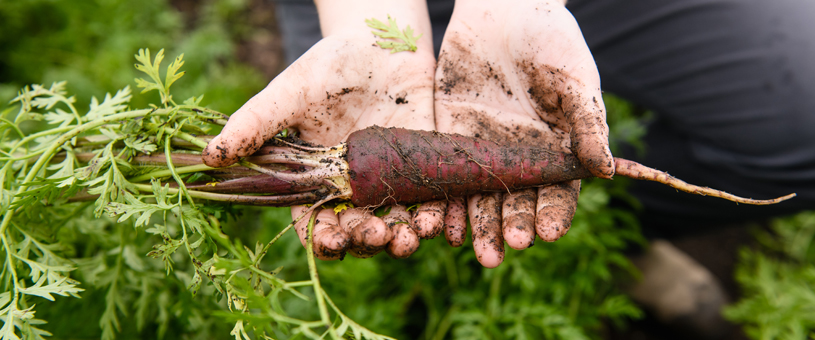
Food
A focus on food production invites the campus community to extend the search for climate solutions beyond the farm gate to the plate through a revisioning of food production, processing, distribution and retailing to promote the health and well-being of land, people and community.
Water
A focus on water invites the campus community to consider the potential for working lands (farmland and forests) to be a source of solutions for a critical climate change adaptation challenge in both rural and urban regions: too much and not enough water. This focus has particular resonance because of the unique role of the Seneca Bottoms in the history of water resource management in the Upstate.
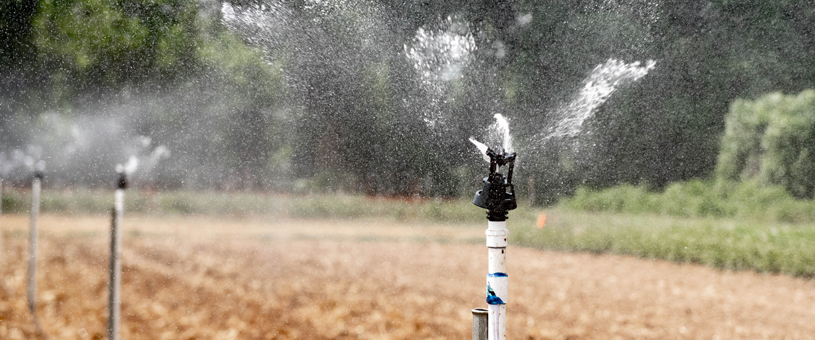
Three Different Climate Solutions
The Agricultural Climate Solutions demonstration farm on Clemson's main campus has three overarching goals:
- invite visitors to explore three different leading strategies of climate-resilient food production,
- compare whole system sustainability in these three systems, and
- manage each system for ecosystem health and high yields.
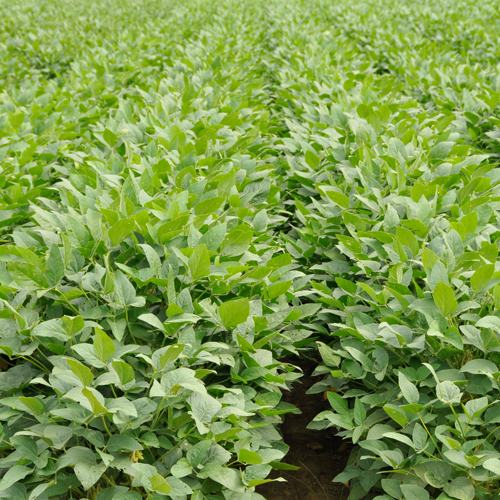
Climate-Smart Agriculture
Climate-Smart Agriculture is a conventional farming strategy that seeks to increase productivity, enhance climate resilience, mitigate greenhouse gas emissions to achieve food security and sustainable development goals. This strategy puts an emphasis on improving the production efficiency of agriculture through a reduction in inputs (land, labor, energy, water, nutrients, and pesticides) per unit crop yield. Clemson's Climate-Smart in SC program supports research and extension in climate-smart farming.
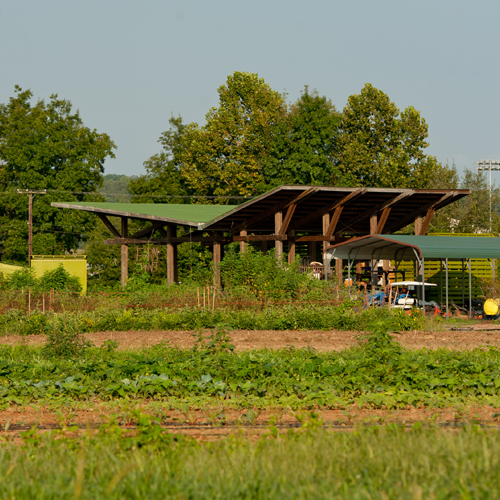
Regenerative Organic Agriculture
Regenerative Organic Agriculture is an organic farming strategy that seeks to promote the health and well-being of both natural and human resources on the farm. This strategy puts an emphasis on practices that enhance the ability of the farm to "soak up" carbon from the atmosphere and store it in the soil to promote soil health, animal welfare, and economic justice for farmers, ranchers and food system workers. The Regenerative Organic Alliance manages a certification program for USDA certified organic operations worldwide.
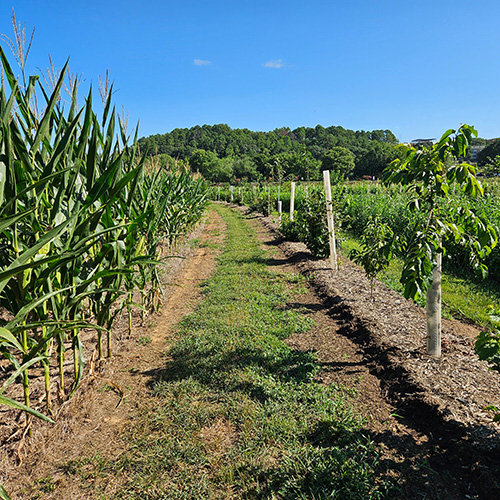
Restoration Agriculture
Restoration Agriculture is an ecosystem restoration strategy that seeks to take advantage of the multiple benefits of native perennial ecosystems while still providing for food, fiber, fuel and other human needs. This strategy uses permaculture principles to design and manage commercial agroforestry systems - mixtures of trees, shrubs, and annual crops - that enhance the ability of the farm to "soak up" carbon from the atmosphere and store it on the farm while producing a diverse mix of fruits and vegetables, nuts, and livestock products.
AGRICULTURAL CLIMATE SOLUTIONS ARE ROOTED IN MULTIFUNCTIONAL AGRICULTURE
Although the primary function of agricultural landscapes is the production of food and fiber, it has long been recognized that some agricultural practices produce many other benefits to society such as the conservation of land and biodiversity, habitat for wildlife, pest management, sustainable nutrient and water cycles, aesthetic and recreational values, and the preservation of cultural traditions. More recently, the climate change mitigation and adaptation benefits of healthy agricultural landscapes have been added to this list.
Multifunctional agriculture is an agricultural production strategy that promotes healthy ecological processes on the farm and in surrounding landscapes in order to produce multiple benefits both on the farm and in neighboring communities. Multifunctional agriculture is not a new idea, but it has recently become recognized as a potential source of solutions to some of the most critical global challenges of our times. Because multifunctional agriculture uses many common farming practices like conservation tillage, diversified crop rotations, and integrated crop/livestock production systems, all producers, regardless of production philosophy, scale of production, geographic location, or marketing strategy, have a multitude of options for enhancing the ecosystem services produced in their agricultural operations.
Multifunctional agriculture is an innovative, inspirational and ecologically-based focus for the Agricultural Climate Solutions Demonstration that meets Clemson's Sustainability Commission design criteria, fully supports the unique placed-based values of the Seneca Bottoms, and expands opportunity for new and different kinds of on-campus collaborations that showcase agriculture as a source of solutions to some of the most pressing problems of the 21st century.
Further Reading
A community connector
Clemson's Organic Research Center
Southeast Farm Press article: Know the critical point when weeds cause largest yield loss
SC ETV segment: The Student Organic Farm at Clemson University | Making It Grow
A catalyst for innovation
From National Geographic: Feeding 9 Billon
A living legacy
South Carolina Information Highway's "History – Cherokee Indians"
Greenville News article: Long before it was a university or plantation, Clemson's campus was home to the Cherokee
Fort Hill: National Historic Landmark
"Clemson, Thomas Green, IV" from South Carolina Encyclopedia
Piedmont Research and Education Center
Climate-Smart Agriculture
Climate-Smart in South Carolina
Regenerative Organic Agriculture
Restoration Agriculture
Agroforestry for Food Project a program of the University of Illinois, Institute for Sustainability, Energy, and Environment (iSEE)


